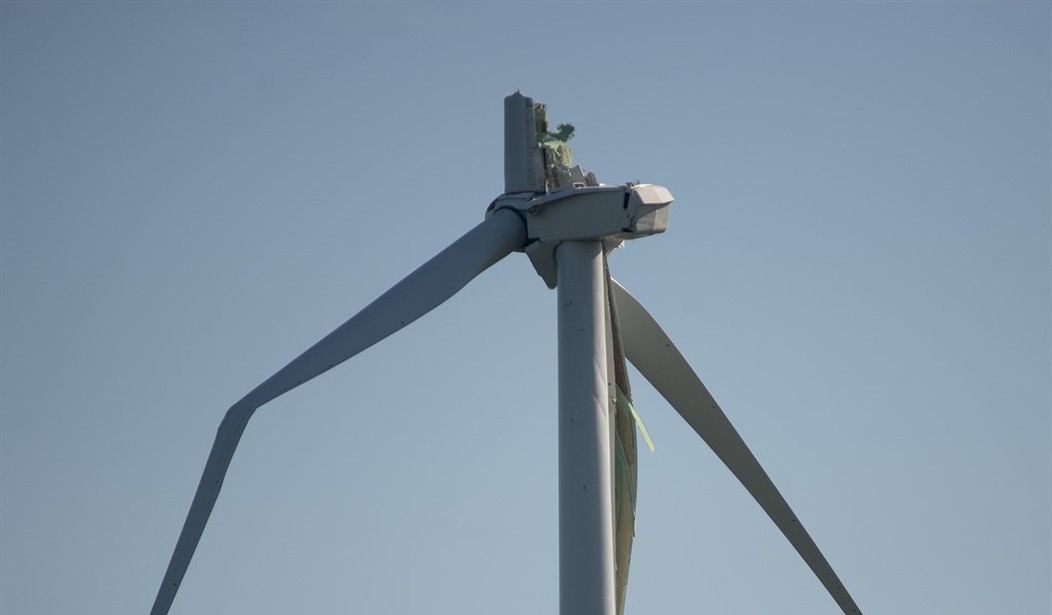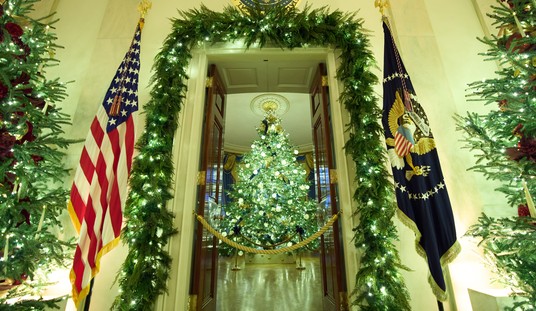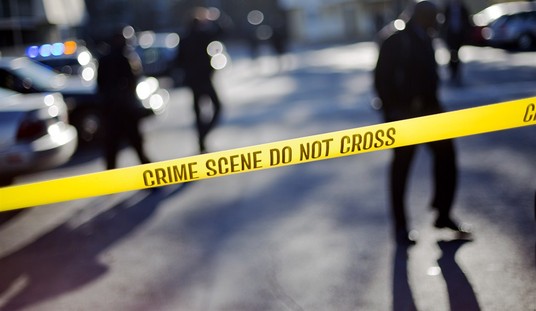It blocked traffic like it owned the place.
A wind turbine blade, longer than most commercial airplanes, angled across westbound I-68 in western Maryland.
At approximately 5:30 a.m., a tractor-trailer traveling westbound on I-70 was pulling a wind turbine blade that struck the guardrail, causing the blade to go partially into the eastbound lanes," a statement said. "The blade was then clipped by a tractor-trailer traveling eastbound.
Drivers stopped. Confused. Some took photos. Some cursed.
What kind of energy source needs a piece of machinery the size of a space shuttle, carried through the mountains with a diesel-chugging escort and police support, only to end up wedged across a major American highway like some absurd parody of progress?
There’s your metaphor. You don’t need to search for one.
It planted itself.
When Green Isn’t
We have been told this is the future. Wind. A harmless spin. A gentle whoosh. A graceful savior from fossil fuel damnation. But what’s been sold as salvation increasingly feels like bait. The truth is harder to spin than those blades.
Because that massive wing wasn’t made in a forest; it came from a plant. Fed by oil. Wrapped in fiberglass and epoxy resin, materials that, once hardened, don’t come undone.
You can’t melt them down.
You can’t reuse them like steel.
You can’t toss them in a blue bin next to last night’s pizza box and feel good about it.
When their time is up, and that time comes fast, those blades become landfill. Toxic. Heavy. Slow to break down. Full of microplastics and fine particulates that flake into the wind and end up who knows where.
Some get chopped up and buried. Some get shipped across the country in convoys like the one in Maryland. Others are just left in giant open fields in Wyoming, Texas, and Kansas. Rotting monuments to wishful thinking.
Meanwhile, the movement that demands paper straws and bans gas stoves doesn’t seem all that bothered.
Birds and Blades: The Unseen Toll
The real environmental toll rarely makes headlines. But it’s everywhere.
Wind turbines kill birds. Not a few. Not occasionally.
Daily.
Eagles, hawks, falcons. Big ones. Protected ones. Conviction for killing a bald eagle is not cheap to the rest of us:
A violation of the Act can result in a fine of $100,000 ($200,000 for organizations), imprisonment for one year, or both, for a first offense. Penalties increase substantially for additional offenses, and a second violation of this Act is a felony.
Quoting Mel Brooks, "It's good to be da king." Government agencies hand out “take” permits that let wind farms kill up to 4,200 bald eagles per year without consequence. That’s not a conspiracy theory. That’s policy. Legal. Documented.
In one high-profile case, a wind company killed over 150 golden and bald eagles and got a fine, some press, and permission to keep spinning.
Now, imagine if a coal plant had done that.
Would there be protests? Of course. Would it be on cable news? Absolutely. Would there be lawsuits, documentaries, and celebrity tweets? Without question. But because it’s wind, no one says much.
The turbine turns. The blade hits. The feathers scatter.
And the press looks away.
The Wind Doesn’t Care If You Need Power
Here’s the ugly part that rarely gets explained by news readers. Wind power is weather power. It doesn’t obey demand, nor does it turn on when you’re cooking dinner or trying to stay warm in a snowstorm.
Nationally, wind turbines average 25 to 45 percent output.
That’s it.
They sit still most of the time. And when they do run, it’s often at the wrong time, late at night, or in seasons where power demand is low.
So we build more of them. Hundreds. Thousands. A kind of overcompensation. And we still have to keep gas or nuclear running in the background, just in case, because no one wants rolling blackouts. After all, the breeze died.
Storage? Don’t count on it. The batteries being built today are impressive on paper but still only provide a few hours of backup.
Not days. Not weeks. And certainly not across a whole region. Most of the time, we still rely on legacy energy to make sure the lights come on when we flip the switch.
The wind may be free. But the system we need to babysit it is expensive.
Related: Vanadium Could Be the Backbone of Our Next Energy Breakthrough
The Land Can’t Keep Up
They told us wind would help protect nature. But look closely. It takes land. And lots of it. Massive patches of it.
A wind farm large enough to match the output of a single nuclear plant might cover tens of thousands of acres. Forests cleared. Hills flattened. Roads cut through once-quiet countryside.
Rural folks, who weren’t asked in the first place, end up living under shadows and blinking red lights. Peace gets traded for noise and pressure waves and a sense that the land is no longer theirs.
And the animals? They scatter.
Wildlife corridors are severed. Mating patterns disrupted. Bats, which are essential for pollination and crop production, are especially vulnerable. They die not just from impact but from pressure changes near the blades that rupture their lungs mid-flight.
But again, because it’s "green," we’re told not to worry.
That Blade in the Road? It's Just the Beginning
What stopped traffic in Maryland is already stopping common sense elsewhere.
The blade doesn’t just clog the highway. It clogs the debate. It forces us to look at what we’ve chosen not to see: the toxic aftermath, the wildlife death, the unreliable delivery, the broken promises.
And it’s only getting worse.
We now have over 216,000 blades in the U.S. Just blades. Not towers or bases. Not the other guts of the machine. Blades alone. All aging. All with a shelf life of roughly two decades. They can’t be recycled at scale. They can’t be shipped back to the factory. And when they break, they don’t disappear. They just become someone else’s problem.
Now, here’s the part that should stick with you:
If Apple sold a phone that only worked a third of the time, couldn’t be recycled, needed a backup phone to run alongside it, and occasionally killed pets and endangered birds, would people call that progress?
What if the government paid you to buy it? What if you were fined for using the older phone that actually worked?
Because that’s where we are, that’s the reality of wind. But no one stops to ask.
Not until the highway shuts down.
Final Thoughts
The problem isn’t that wind energy exists. It’s that we’ve allowed politics, profit, and a warped sense of environmental virtue to cloud judgment. We’ve replaced one kind of pollution with another and told ourselves it was better because we can’t see the smoke.
But the cost is still there.
It’s buried in the dirt. Spinning in the sky. Lying sideways on an interstate in Maryland, waiting to be hauled away.
And the next time you’re stuck behind one, maybe you’ll ask yourself what we’re really being asked to follow.










